The film emphasizes the importance of safety when using hand tools in a workshop. It discusses the significance of keeping tools sharp and in good condition, proper handling techniques, and the need for safe storage. The film also covers guidelines for using specific tools like saws, chisels, screwdrivers, and wrenches, highlighting the dangers of using dull or damaged tools. Additionally, it stresses the importance of maintaining a clean and organized workspace, wearing appropriate protective gear, and being aware of one’s surroundings to prevent accidents.
Related Movies
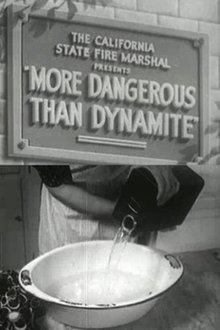
More Dangerous Than Dynamite (1941)
A short film warning the unaware housewife of the dangers of “dry cleaning” with gasoline at home.
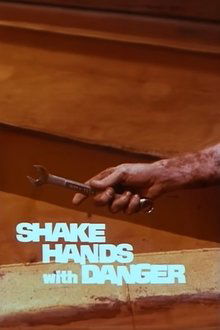
Shake Hands with Danger (1980)
This short cautionary training film examines dangers associated with earthmoving equipment operation, showing many simulated accidents on construction sites.

The Gambler (1950)
This late 1940s/early 1950s rather graphic color film about carelessness and safety operating heavy machinery is presented by Caterpillar.

Decade of Death (1971)
This highway scare film produced by the Highway Safety Foundation in 1971, "Decade of Death", is a retrospective of the organization's 10 years of gory, shocking social guidance films which aimed to promote traffic safety and driver responsibility through the display of bloody and horrific footage of traffic crashes.The Highway Safety Foundation made driver scare films such as "Signal 30," "Mechanized Death," and "Highways of Agony" that intended to encourage drivers to drive responsibly and with consideration of the risks and consequences. It was the organization's belief that crash footage, while horrific, was the best way to convey the importance of driving safely.

Anatomy of a Disaster: Explosion at BP Texas City Refinery (2008)
This U.S. Chemical Safety Board (CSB) video uses expert testimony and computer-animated reenactments to describe and discuss its detailed investigation into the March 23 2005 explosion of the ISOM (isomerization) unit at the BP (British Petroleum) refinery at Texas City, Texas. The explosion killed 15 workers, injured 180 others, and cost BP billions of dollars.
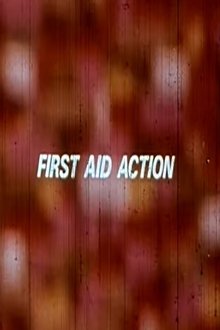
First Aid Action (1973)
Concentrates upon basic first aid steps. Simulated situations provide an opportunity to discuss and demonstrate mouth-to-mouth resuscitation, shock, bleeding, burns, fractures, poisoning and sudden illness. A recap is made of all first aid directions. Shots of real accidents provide realism which reinforce the film’s theme. Narrated by Burt Reynolds. ACMI Identifier 003727

Youth (Spring) (2023)
This film was shot between 2014 and 2019 in the town of Zhili, a district of Huzhou City in Zhejiang province, China. Zhili is home to over 18,000 privately-run workshops producing children's clothes, mostly for the domestic market, but some also for export. The workshops employ around 300,000 migrant workers, chiefly from the rural provinces of Yunnan, Guizhou, Anhui, Jiangxi, Henan and Jiangsu.

Joe Weider's Bodybuilding Training System, Session 10: Training Safe & Smart (1994)
This session covers workout clothing, straps, wraps, and belts; warm-up and stretching; basic sports-medicine; healing; how to recognize and respond to minor injuries; plus common types of injury and how to prevent them.

A & E: When Patients Attack (2015)
Hospital staff are reporting more violence and anti-social behaviour than ever before. In 2015, 8 staff were assaulted every hour – a new record high. At The Queen Elizabeth Hospital in Birmingham – one of the UK’s biggest hospitals – they think they have the answer. Here a private security force of 46 uniformed guards, and a sophisticated CCTV system, keep staff and patients safe. A colourful mixture of characters ranging from ex-soldiers, to bouncers, to former elite sportsmen, it’s the security team’s job to keep the hospital running smoothly. With more than 2 million visitors they have to deal with all aspects of crime and anti-social behaviour. All against a back drop of life changing and life saving procedures.

VD: Know Your Contacts (1968)
Shows how people, faced with the possibility or reality of being infected with venereal disease, cope with their individual situations.

Never Be A Victim (1996)
POLICE OFFICER JIM BYRNE, Canada's most honoured Safety Education Specialist brings you his famous TEN RULES, with which he has personally tested more than 25,000 students. Learn key strategies now taught in many schools and used by police working with the full NEVER BE A VICTIM Institutional Study Program. Develop your own personal streetproofing skills so you can train and test your family. Robert Gordon, who created this remarkable program in partnership with Metropolitan Police introduces this family video library against a backdrop of today's troubled society. TEACHING LIFE SKILLS FOR A SAFER COMMUNITY OFFICER JIM'S TEN RULES FOR STREETPROOFING • STRANGER MYTHS • ABDUCTION • BEING FOLLOWED • DANGEROUS PLACES • AVOIDING CARS AND VANS • GOOD TOUCHING-BAD TOUCHING

Life in the Fast Lane (1981)
Information film about freeways, their interchanges, and driving safely on them.

Safety in the Shop: Power Tools (1970)
The film emphasizes the importance of safety when using power tools in a workshop. It outlines key safety practices, such as using guards, securing materials, and wearing protective gear like safety glasses. The film also covers specific tool usage tips, including the correct handling of cutting machines, drills, grinders, and lathes, stressing that safety precautions should never be neglected. Proper maintenance and awareness of tool settings are crucial to prevent accidents.
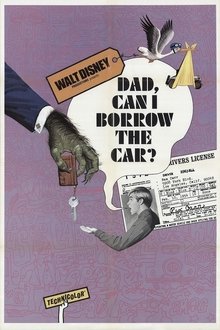
Dad... Can I Borrow the Car? (1970)
A live-action short, using many avant-garde film techniques, that looks at American car culture in the late 1960s. The main section deals with the many trials and obstacles a teenager must face on the path to being able to drive. Surviving the driver's education class is only the first step, as the teenager must then pass his driving test, and then finally get permission to borrow the family car.

Carrier or Killer (1966)
This film shows the dangers of driving commercial trucks professionally as part of driver’s education. It displays various truck drivers; some cautious and others fatally dangerous.

The English Surgeon (2007)
This documentary offers a glimpse into the life of an English neurosurgeon, Henry Marsh, situated in Ukraine, as we are exposed to the overwhelming dilemmas he has to face and the burden he has to carry throughout his profession.
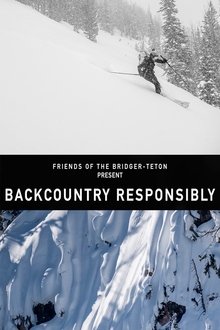
Backcountry Responsibility (2024)
The recent heavy workload faced by Teton County Search and Rescue crews last winter highlights the fact that some recreational users of the Bridger Teton National Forest are in critical need of more and better information regarding best practices and safe conduct on National Forest lands. Many of these incidents could potentially be avoided with proper planning and critical thinking in the backcountry. In partnership with Friends of Bridger-Teton, TGR presents Backcountry Responsibly, a digital film targeted at the growing number of winter backcountry users whose impact on the surrounding public lands has increased dramatically in recent years. Backcountry Responsibly, premieres January 7, 2024. Watch online at: https://www.btfriends.org/tgr

Office Safety: The Thrill Seekers (1983)
A satire about “thrill seekers” who recklessly ignore basic safety rules when it comes to workplace safety.

Manufacturing Ignorance (2020)
Tobacco, climate change, pesticides,... Never has scientific knowledge seemed so vast, detailed and shared. And yet it appears to be increasingly challenged. It is no longer surprising to see private corporations put strategies in place to confuse the public debate and paralyze political decision-making. Overwhelmed by excess of information, how can we, as citizens, sort out fact from fiction? One by one, this film dismantles the workings of this clever manoeuvre that aims to turn science against itself. Thanks to declassified archives, graphic animations and testimonies from experts, lobbyists and politicians, this investigation plunges us into the science of doubt. Along with a team of experts (philosophers, economists, cognitive scientists, political men, or even agnotologists), we explore concrete examples of doubt making and try to understand the whole process and the issues behind it.
